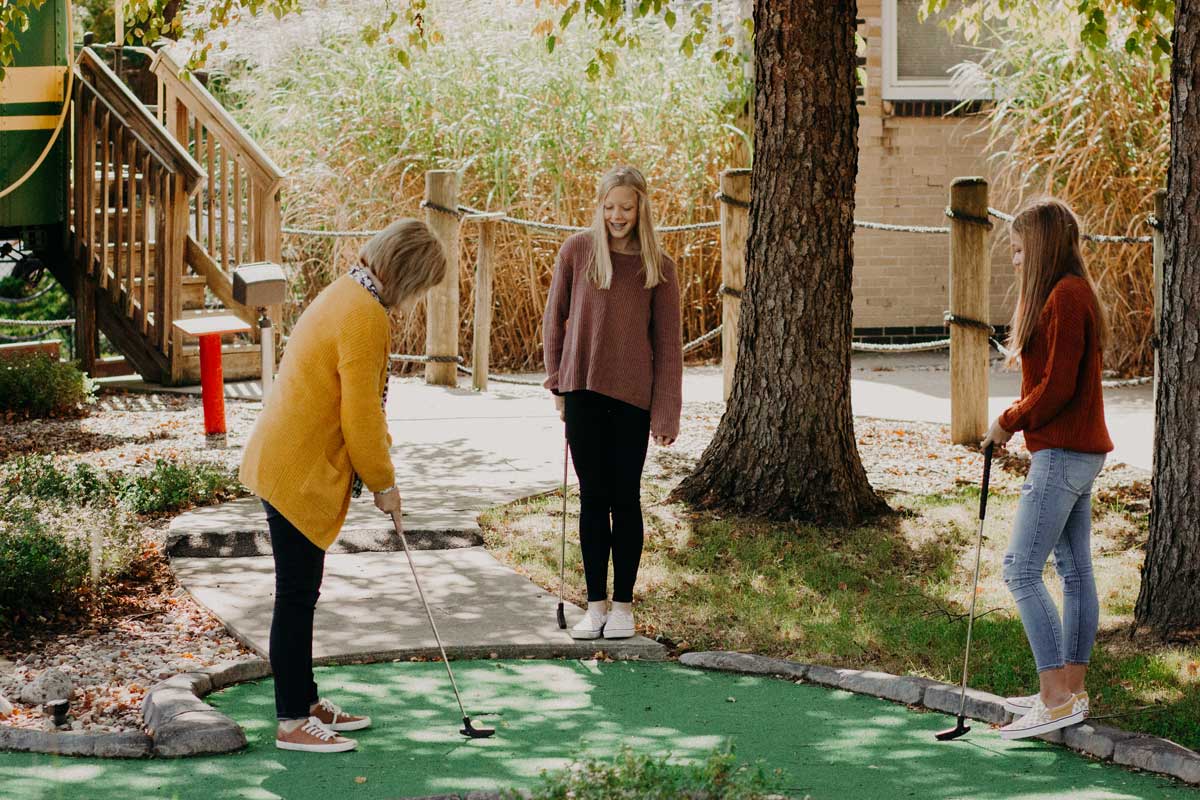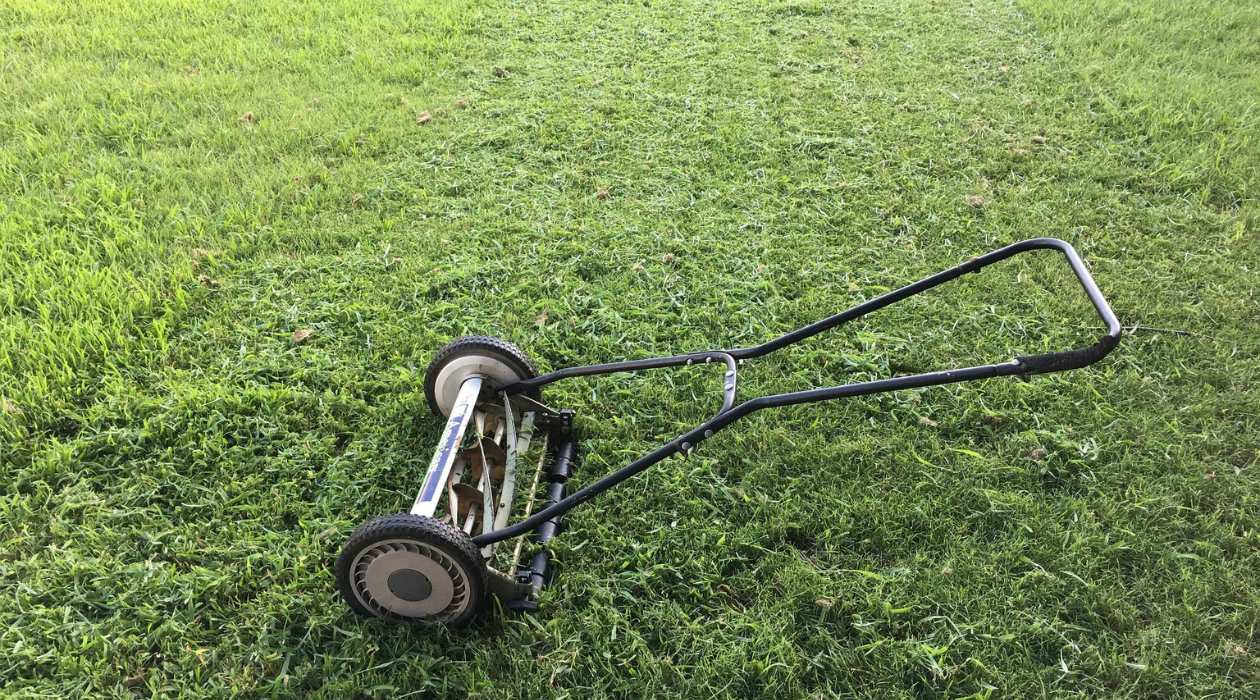Home>Gardening & Outdoor>Outdoor Recreation & Activities>Who Goes First In Mini Golf


Outdoor Recreation & Activities
Who Goes First In Mini Golf
Modified: February 29, 2024
Discover the rules and strategies for determining who goes first in mini golf. Learn how to ensure a fair and fun game for all players. Perfect for outdoor recreation and activities enthusiasts!
(Many of the links in this article redirect to a specific reviewed product. Your purchase of these products through affiliate links helps to generate commission for Storables.com, at no extra cost. Learn more)
**
Introduction
**
Welcome to the wonderful world of mini golf, where the sun is shining, the grass is lush, and a world of fun and challenge awaits. Mini golf, also known as miniature golf or putt-putt, is a beloved pastime that combines the thrill of golf with the whimsy of creative course designs. It's a game that can be enjoyed by people of all ages and skill levels, making it a fantastic choice for a leisurely day out with friends or family.
As you step onto the mini golf course, you'll find yourself surrounded by a delightful array of obstacles, from windmills and water features to tunnels and ramps. Each hole presents a unique puzzle to solve, requiring a keen eye, a steady hand, and a touch of finesse. The joy of mini golf lies not only in the satisfaction of sinking that perfect putt but also in the camaraderie and laughter that accompany each round.
In this article, we'll take a closer look at the fascinating world of mini golf, delving into its history, rules, strategies, and even the age-old question of who goes first. Whether you're a seasoned mini golf pro or a newcomer eager to learn the ropes, there's something here for everyone. So, grab your putter, pick out your favorite ball, and let's embark on an adventure through the enchanting realm of mini golf.
**
Key Takeaways:
- Mini golf originated in the late 19th century and has evolved into a beloved recreational activity, offering fun, challenge, and camaraderie for players of all ages and skill levels.
- When determining who goes first in mini golf, players can use random selection, courtesy, last hole performance, rotating order, consensus, or competitive rankings to ensure a fair and enjoyable experience.
Read more: How To Score In Mini Golf
History of Mini Golf
**
The origins of mini golf can be traced back to the late 19th century, when it emerged as a delightful offshoot of its more formal counterpart, traditional golf. The first known mini golf course, “The Ladies’ Putting Club” was established in St. Andrews, Scotland in 1867, providing women with the opportunity to enjoy the sport at a time when golf was predominantly male-dominated.
However, it was in the United States during the early 20th century that mini golf truly began to capture the public’s imagination. In 1916, James Barber designed the first miniature golf course in Pinehurst, North Carolina, featuring artificial putting surfaces and whimsical obstacles. This innovative concept quickly gained popularity, and by the 1920s, mini golf had become a beloved pastime across the country.
The Great Depression further fueled the mini golf craze, as it provided an affordable form of recreation during challenging economic times. Miniature golf courses sprung up in urban centers and suburban areas, offering a lighthearted escape for individuals and families alike.
Over the decades, mini golf has continued to evolve, with courses becoming increasingly elaborate and imaginative. From pirate-themed adventures to jungle expeditions, the creativity and ingenuity displayed in course designs have added an extra layer of enchantment to the game.
Today, mini golf has cemented its status as a cherished recreational activity, enjoyed by millions of enthusiasts around the world. Its enduring appeal lies in its accessibility, its capacity for fostering friendly competition, and its ability to create lasting memories for players of all ages.
With its rich history and enduring popularity, mini golf stands as a testament to the timeless allure of combining skill, amusement, and a touch of whimsy.
**
Rules and Etiquette
**
While mini golf may exude an air of leisure and fun, it is not without its rules and etiquette. Understanding and adhering to these guidelines not only ensures a smooth and enjoyable experience for all players but also upholds the integrity of the game.
1. Observe Course-Specific Rules: Before teeing off, familiarize yourself with any specific rules or guidelines unique to the mini golf course you’re visiting. These may include restrictions on ball movement, designated starting points for each hole, or particular instructions for navigating obstacles.
2. Respect Your Turn: Mini golf is a game of patience and courtesy. Allow the player farthest from the hole to take their turn, and refrain from hitting your ball until the path ahead is clear. This not only prevents collisions but also demonstrates respect for your fellow players.
3. Limit Stroke Attempts: Most mini golf courses impose a maximum number of strokes per hole, often ranging from 4 to 6. If you reach this limit, pick up your ball and proceed to the next hole. This rule prevents undue delays and keeps the game flowing smoothly.
4. Mind Your Manners: While a bit of friendly banter and lighthearted competition are part and parcel of the mini golf experience, it’s important to maintain good sportsmanship. Avoid disruptive behavior, refrain from distracting other players, and be gracious in both victory and defeat.
5. Handling Equipment: Treat the putter and golf balls with care, returning them to their designated areas after use. Avoid swinging the putter excessively or engaging in any behavior that may compromise the safety of other players or the course itself.
6. Leave No Trace: Just as in traditional golf, it’s essential to leave the course in the same condition in which you found it. Dispose of any trash in the provided receptacles and be mindful of the natural surroundings as you navigate the course.
By embracing these rules and etiquette, players contribute to a harmonious and enjoyable mini golf experience for all. Whether you’re a seasoned enthusiast or a newcomer to the game, these principles lay the groundwork for a pleasurable and sportsmanlike outing on the mini golf course.
**
To determine who goes first in mini golf, you can use the “honors” system where the player with the lowest score on the previous hole goes first. If scores are tied, you can flip a coin or use another fair method to decide.
Strategies for Mini Golf
**
While mini golf may appear to be a casual and lighthearted pursuit, a strategic approach can significantly enhance your performance on the course. By honing your skills and adopting smart tactics, you can navigate the whimsical obstacles with finesse and improve your chances of achieving that coveted hole-in-one.
1. Patience and Precision: Mini golf rewards precision and patience. Take the time to line up your shots, carefully assessing the terrain and any potential obstacles in your path. A steady hand and a thoughtful approach can make all the difference, particularly on holes with intricate layouts.
2. Adapt to Course Features: Each mini golf course presents its own set of challenges, from undulating terrain to imaginative barriers. Stay adaptable and be prepared to adjust your strategy based on the unique features of each hole. Experiment with different shot angles and velocities to find the most effective approach.
3. Mastering Bank Shots: Bank shots, where the ball rebounds off a surface before reaching the hole, can be a valuable technique in your mini golf arsenal. By strategically utilizing bank shots, you can navigate around obstacles and guide the ball toward the target with greater control.
4. Visualize Your Shots: Before executing a putt, take a moment to visualize the trajectory of your ball. Consider the contours of the green, the position of any obstacles, and the ideal path to the hole. This mental exercise can help you refine your aim and increase the likelihood of a successful putt.
5. Play the Angles: Understanding the principles of angles and deflection can be advantageous in mini golf. By leveraging the angles of ramps, curves, and other course elements, you can strategically direct your ball toward the hole, bypassing potential hazards along the way.
6. Embrace Risk-Management: Some holes may tempt you with daring, high-risk routes that promise a direct path to the hole. While these opportunities can yield impressive results, they also carry a greater chance of error. Assess the potential rewards and pitfalls of such routes before committing to them.
By integrating these strategies into your approach, you can elevate your mini golf game and relish the satisfaction of conquering each hole with skill and finesse. Remember, while victory is a delightful outcome, the true joy lies in the journey of mastering the art of mini golf.
**
Factors to Consider for Determining Who Goes First
**
As you step onto the mini golf course with your fellow players, the age-old question arises: who should go first? While the decision may seem arbitrary, several factors can influence the order of play, ensuring a fair and enjoyable experience for all participants.
1. Random Selection: A simple and impartial method for determining the starting player involves a random selection process. This can take the form of drawing straws, flipping a coin, or using a random number generator. By leaving the decision to chance, all players have an equal opportunity to claim the coveted position of the lead-off putter.
2. Courtesy and Chivalry: In the spirit of courtesy and chivalry, players may opt to allow the youngest or oldest participant to go first. This gesture of respect not only acknowledges the contributions of players of different ages but also adds a touch of gallantry to the proceedings, fostering a congenial atmosphere on the course.
3. Last Hole Performance: Another approach involves considering the performance on the last hole. The player with the lowest score on the previous hole may earn the privilege of teeing off first on the subsequent hole. This method introduces an element of friendly competition and rewards skill and precision on the mini golf course.
4. Rotating Order: To ensure fairness and equality, players can adopt a rotating order for each hole. For instance, the player who went first on the previous hole may move to the back of the queue, creating a balanced rotation that distributes the advantage of teeing off first among all participants over the course of the game.
5. Consensus and Agreement: Ultimately, the decision of who goes first may be reached through a consensus among the players. By engaging in open dialogue and considering the preferences of all participants, a mutually agreeable sequence can be established, fostering a sense of camaraderie and cooperation among the players.
6. Competitive Edge: For those seeking a more competitive edge, a mini golf tournament may employ a predetermined order of play based on rankings or scores from previous rounds. This method adds an element of strategy and anticipation, heightening the stakes as players vie for the advantage of teeing off first.
By taking these factors into account, players can establish a fair and equitable system for determining who goes first, setting the stage for an engaging and harmonious mini golf experience. Whether through chance, courtesy, or friendly competition, the order of play adds an extra layer of intrigue to the game, enhancing the overall enjoyment for all involved.
**
Read more: How To Play Mini Golf
Conclusion
**
As we conclude our exploration of the captivating realm of mini golf, we are reminded of the enduring charm and universal appeal of this beloved pastime. From its humble origins in 19th-century Scotland to its widespread popularity across the globe today, mini golf has woven itself into the fabric of leisure and recreation, delighting players of all ages with its blend of skill, creativity, and camaraderie.
Through the annals of history, mini golf has weathered the tides of time, adapting and evolving to capture the imagination of enthusiasts young and old. Its whimsical courses, adorned with a tapestry of obstacles and challenges, serve as miniature playgrounds where players can test their mettle, share moments of laughter, and revel in the simple pleasures of friendly competition.
As we’ve delved into the rules, strategies, and etiquette of mini golf, we’ve uncovered a world brimming with opportunity for skillful play, strategic thinking, and good sportsmanship. Each putt, each swing of the putter, becomes a microcosm of determination and precision, offering a canvas upon which players can paint their own unique stories of triumph and resilience.
And so, as players gather at the first tee, the age-old question of who goes first emerges, carrying with it the spirit of chance, courtesy, and friendly rivalry. The decision, whether reached through random selection, consensus, or competitive rankings, sets the stage for a delightful journey through the whimsical landscape of the mini golf course.
Ultimately, mini golf transcends its role as a mere game, becoming a conduit for joy, connection, and shared experiences. It fosters bonds among friends and family, kindles the spirit of friendly competition, and offers a respite from the rigors of daily life. In the world of mini golf, every stroke is a story, every obstacle a challenge to be conquered, and every hole a new adventure waiting to unfold.
So, as you embark on your next mini golf outing, may you savor each moment, relish each putt, and bask in the camaraderie that this delightful pursuit affords. Whether you’re aiming for a hole-in-one or simply reveling in the company of fellow players, may the enchanting world of mini golf continue to inspire laughter, camaraderie, and cherished memories for generations to come.
Frequently Asked Questions about Who Goes First In Mini Golf
Was this page helpful?
At Storables.com, we guarantee accurate and reliable information. Our content, validated by Expert Board Contributors, is crafted following stringent Editorial Policies. We're committed to providing you with well-researched, expert-backed insights for all your informational needs.















0 thoughts on “Who Goes First In Mini Golf”